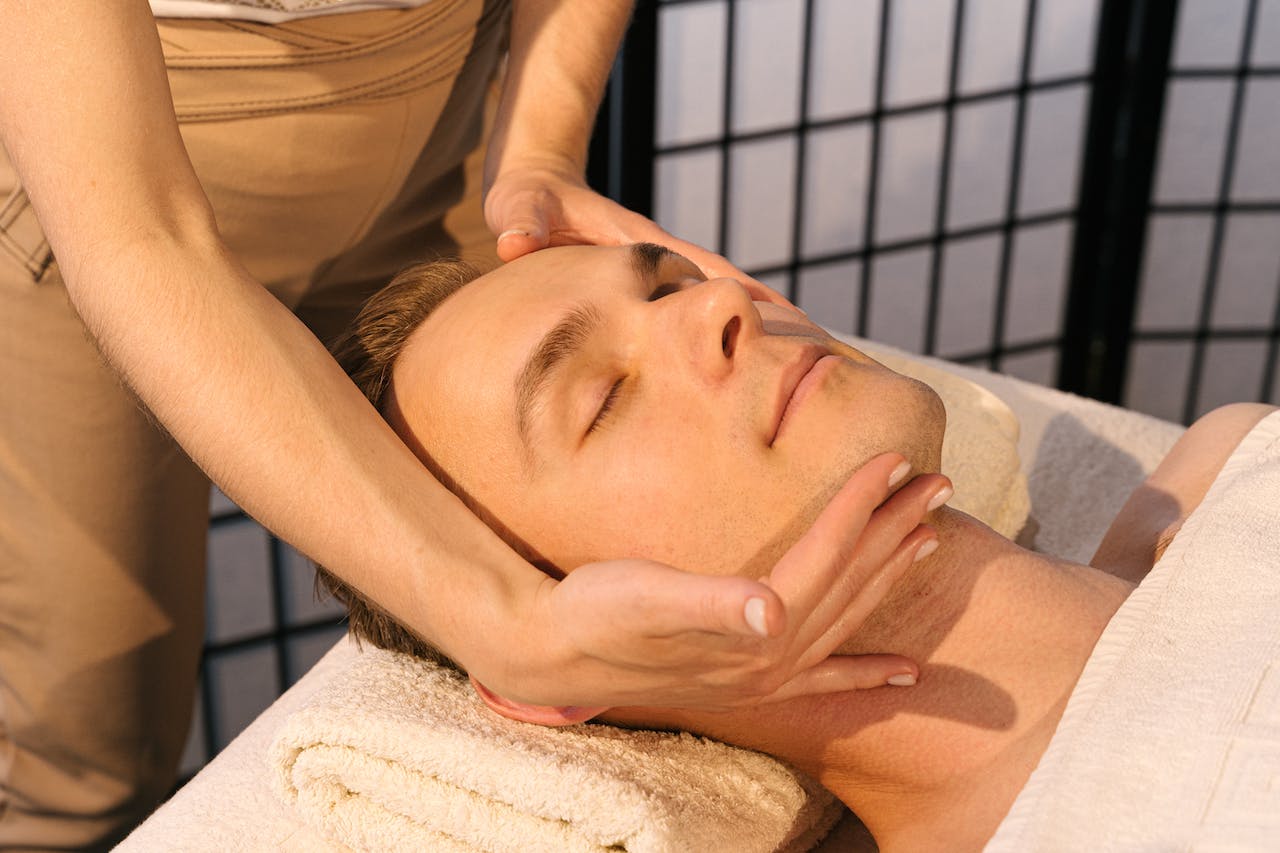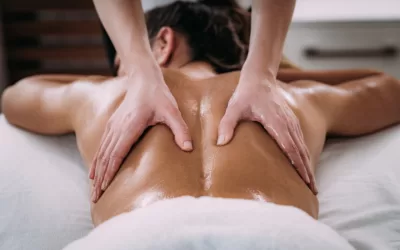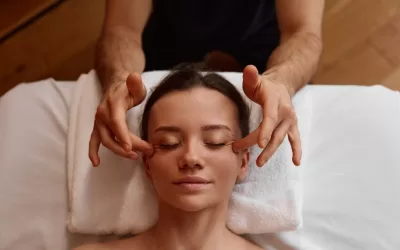If you’ve been grappling with TMJ disorder and traditional treatments have fallen short, Structural Integration might just be the game-changer you’ve been seeking. This holistic approach focuses on realigning your body’s structure to alleviate pain and tension, offering a potential solution where other methods may have failed. By targeting the root cause of your TMJ issues through manipulation and movement education, Structural Integration aims to provide lasting relief that goes beyond mere symptom management. Dive into this in-depth analysis to uncover why Structural Integration could be the key to finally finding peace from your TMJ discomfort.
Understanding TMJ/TMD Causes
TMJ disorders can stem from various factors such as teeth grinding, jaw clenching, and injury to the jaw. Other causes include stress, arthritis, and connective tissue diseases.
Misalignment of the teeth or jaw, known as malocclusion, can also contribute to TMJ disorders. This misalignment puts undue pressure on the jaw joint, leading to inflammation and discomfort.
When the Temporomandibular joint is not functioning correctly, it can result in inflammation due to strained muscles and ligaments surrounding the joint. This inflammation leads to pain and restricted movement of the jaw.
The dysfunction in this joint can be exacerbated by habits like excessive gum chewing or nail-biting, which put additional stress on the joint. Over time, this strain can manifest as TMJ disorder symptoms.
Misalignment of the jaw or teeth affects how the temporomandibular joint functions. When there is a misalignment, it disrupts the smooth movement of the jaw during activities like chewing or speaking.
This disruption causes uneven pressure distribution within the joint, leading to wear and tear on the cartilage and other structures supporting it. As a result, individuals may experience clicking sounds, pain while chewing, or even locking of the jaw.
Structural Integration’s Role in TMJ Relief
Structural Integration, a manual therapy technique that involves finger pressure and manipulation of the body’s connective tissues, has shown promise in alleviating TMJ symptoms. By targeting specific areas of tension and misalignment in the body, Structural Integration can help release tightness in the jaw muscles associated with TMJ disorder. This gentle yet effective approach aims to improve overall structural alignment, which can lead to reduced pain and discomfort in the temporomandibular joint.
One of the key benefits of Structural Integration for TMJ issues is its holistic approach to addressing underlying structural imbalances that may contribute to jaw pain. Unlike traditional treatments that focus solely on symptom management, Structural Integration aims to address the root cause of the problem by restoring balance and mobility to the entire body. Through targeted finger pressure techniques and movement education, Structural Integration sessions can help improve posture, release tension in the jaw, and promote better alignment throughout the body.
Studies have shown that Structural Integration can be an effective complementary therapy for individuals suffering from TMJ disorder. By working on the fascia – the connective tissue that surrounds muscles and organs – Rolfers can help improve tissue mobility and reduce restrictions that may be contributing to jaw pain. The finger pressure applied during Structural Integration sessions can target specific trigger points in the jaw and face, helping to release tension and promote relaxation in these areas. Many individuals have reported significant improvements in their TMJ symptoms after undergoing a series of Structural Integration sessions.
Key Focus Areas During Structural Integration Sessions
Structural Integration sessions often target hip flexion, a crucial area for overall body alignment. By addressing hip flexion, Structural Integration aims to improve posture and alleviate tension in the lower back.
During Structural Integration, practitioners focus on enhancing active range of motion in various joints. This process involves gentle manipulation of muscles and connective tissues to increase flexibility and mobility.
Alignment plays a significant role in Structural Integration sessions, with a focus on correcting imbalances in the body. Practitioners work towards aligning the body’s structure to promote better movement patterns and reduce strain on muscles.
In Structural Integration sessions, specific muscles and fascia elements are targeted to release tension and improve overall function. By working on these areas, practitioners aim to address underlying issues contributing to discomfort or pain.
Releasing tension in key areas through Structural Integration is essential for restoring balance and promoting optimal functioning of the body. By targeting specific muscles and fascial elements, practitioners help clients experience relief from chronic pain or restricted movement.
The Fascia’s Importance in TMJ Treatment
The connective tissues known as fascia play a crucial role in TMJ treatment. These fibrous tissues surround and support muscles, bones, and organs throughout the body. In the context of TMJ disorders, the fascia’s health is paramount.
Fascia impacts muscle tone and function, affecting the alignment and movement of the jaw. Imbalances or restrictions in the fascial system can lead to muscle tension and pain in the jaw area, exacerbating TMJ symptoms.
In individuals with TMJ disorders, abnormalities in the fascial elements can contribute to dysfunction. Adhesions or tightness in the fascia may restrict normal jaw movement, leading to discomfort, clicking sounds, or difficulty opening and closing the mouth.
The release of tension in the fascial network through techniques like rolfing can alleviate strain on the muscles surrounding the temporomandibular joint. By addressing fascial restrictions, rolfing aims to restore proper alignment and function to reduce TMJ symptoms.
Role of Fascia in Jaw Function
The fascia plays a significant role in maintaining optimal jaw function. It provides structural support to the muscles involved in chewing and speaking while allowing for smooth and coordinated movements of the jaw joint.
When fascial restrictions occur due to factors like poor posture, stress, or trauma, they can impact jaw mobility and overall comfort. Structural Integration sessions target these restrictions by applying pressure to release tension and restore balance to the fascial system.
- Structural Integration helps improve muscle coordination around the jaw joint.
- Enhanced fascial flexibility can promote better jaw alignment.
- Addressing fascial imbalances may lead to long-term relief from TMJ symptoms.
The 10-Series Structural Integration Process
The 10-Series Structural Integration process is a systematic approach designed to address the body’s alignment and movement patterns. It consists of ten sessions, each focusing on different areas of the body to promote balance and internal rotation. The sessions are strategically structured to progressively work through the body, starting from the surface layers towards deeper tissues like fascia.
During the Structural Integration process, each session builds upon the previous one, creating a floor for optimal structural integration. The initial sessions typically concentrate on releasing tension in superficial muscles and addressing postural imbalances. As the series advances, the focus shifts towards reorganizing deeper layers of connective tissue to enhance overall body function and mobility.
In Structural Integration, every session aims to improve range of motion, enhance body awareness, and correct alignment issues contributing to conditions like TMJ disorder. The primary goal is to restore balance within the body by addressing internal rotation restrictions and promoting better movement patterns.
Throughout the 10-Series, clients often experience a gradual improvement in posture, reduced pain levels, increased flexibility, and enhanced overall well-being. By targeting specific areas of tension and misalignment in each session, Structural Integration helps alleviate symptoms associated with TMJ disorder by addressing underlying structural issues.
- Improved range of motion
- Enhanced body awareness
- Corrected alignment issues
Session Breakdown
Session 1 – Opening: Focuses on establishing a foundation for future work by loosening superficial layers of fascia.
Session 2 & 3 – Front Line: Addresses patterns of tension along the front of the body to improve posture and breathing.
Session 4 & 5 – Side Body: Targets lateral lines to address issues related to gait, hip stability, and shoulder alignment.
Session 6 & 7 – Back Line: Concentrates on releasing tension along the back chain for improved spinal alignment and mobility.
Session 8 & 9 – Integration: Integrates previous work by aligning segments of the body for better coordination and support.
Session 10 – Closure: Aims to solidify changes made throughout the series while setting up long-term benefits for clients.
Benefits Beyond Pain Relief
Overall Wellness
Structural Integration offers health benefits that extend beyond just addressing chronic pain. By realigning the body’s structure, it enhances overall wellness and vitality. This process goes beyond mere symptom relief to promote a healthier lifestyle.
The therapist focuses on rebalancing the body, which can lead to improved posture, increased mobility, and enhanced physical performance. Through targeted manipulations, Structural Integration aims to optimize the body’s alignment for better function and reduced strain on muscles and joints.
Holistic Body Effects
Beyond alleviating musculoskeletal pain, Structural Integration impacts various aspects of an individual’s life. It not only addresses physical discomfort but also considers emotional and psychological well-being. By enhancing body awareness and promoting relaxation, it contributes to a sense of wholeness.
Structural Integration sessions often involve deep breathing exercises that help release tension and improve circulation. This integration of breathwork with structural manipulation fosters a deeper connection between the mind and body, leading to profound life changes for many individuals.
Improved Quality of Life
One of the remarkable outcomes of Structural Integration is its ability to enhance an individual’s quality of life significantly. By addressing issues at their root cause rather than merely masking symptoms, this approach provides long-lasting results. Patients often report feeling more energized, balanced, and in tune with their bodies after undergoing a series of sessions.
Structural Integration interventions can also target specific areas like the hip region, aiding in mobility and reducing discomfort associated with conditions such as TMJ disorder. This personalized approach tailored to each patient’s needs ensures that they receive targeted care for their unique concerns.
The Mind-Body Connection
Structural Integration not only focuses on physical adjustments but also emphasizes the importance of mental well-being. By aligning the body’s structure, it helps individuals breathe more efficiently, leading to improved oxygenation throughout the body. This enhanced respiratory function can have profound effects on one’s overall health and vitality.
Incorporating Structural Integration into a wellness routine can lead to transformative changes in how individuals perceive and experience their bodies. The integration of structural realignment with mindful practices creates a harmonious balance that supports both physical health and emotional health.
Preparing for Your Structural Integration Journey
When you arrive for your Structural Integration session, ensure you wear comfortable clothing to allow easy movement during the therapy. Comfort is key.
Before starting the session, take a moment to form clear intentions of what you aim to achieve through Structural Integration. This mental preparation can enhance the experience.
Effective communication with your Structural Integration practitioner is crucial. University studies have shown that open communication leads to better outcomes in therapy sessions.
Prior to your Structural Integration session, it’s advisable to stay hydrated and avoid heavy meals. This helps in maximizing the benefits and comfort during the treatment.
During the Structural Integration session, be prepared for various sensations as your body undergoes structural alignment. Trust the process and communicate any discomfort promptly.
After a Structural Integration session, engage in self-care practices like gentle stretching or taking a warm bath to prolong the effects of the therapy and promote relaxation.
After your first session, it’s common to experience some soreness as your body adjusts. This is a normal part of the healing process post-Structural Integration.
To maintain progress, consider scheduling follow-up sessions based on your practitioner’s recommendation. Consistency plays a significant role in achieving long-term benefits.
Safety and Effectiveness of Structural Integration
During Structural Integration sessions, it is crucial for the practitioner to ensure a safe environment. They should have proper training and certification in anatomy, physiology, and bodywork techniques. Safety measures include assessing the client’s medical history to identify any contraindications that may affect the session.
A qualified Structural Integration practitioner will always prioritize client comfort and safety. They will communicate effectively with the client throughout the session, ensuring that the pressure applied is within the client’s tolerance levels. They will educate clients on post-session care to prevent any adverse reactions or discomfort.
Structural Integration has shown promising results in treating TMJ disorders by addressing muscular imbalances and tension in the jaw, neck, and shoulders. Through targeted manipulation of fascia and soft tissues, Structural Integration can help alleviate pain, improve range of motion, and restore proper alignment in the jaw joint.
Clients with TMJ disorders often experience relief after a few sessions of Structural Integration. The hands-on approach of Structural Integration allows for individualized treatment, focusing on specific areas of tension and dysfunction related to TMJ issues. Regular Structural Integration sessions can lead to long-term improvements in TMJ symptoms.
When seeking Structural Integration for TMJ disorder treatment, it is essential to choose a qualified practitioner with certification from an accredited Structural Integration institute. A skilled practitioner will have extensive training in structural integration techniques tailored to address musculoskeletal issues like TMJ disorders.
Conclusion
You’ve delved into the intricacies of TMJ disorders and explored how Structural Integration could offer relief beyond conventional treatments. By understanding the root causes and the holistic approach of Structural Integration, you’ve gained insights into a potentially transformative therapy for your TMJ concerns. The tenacity of fascia work and the tailored 10-series process may hold the key to unlocking long-term benefits for your jaw health. As you prepare to embark on your Structural Integration journey, remember that safety and effectiveness are paramount, ensuring you reap the full advantages of this therapeutic path.
Take the next step in your quest for TMJ relief by considering Structural Integration as a comprehensive solution. Your journey towards a pain-free jaw and improved quality of life awaits. Embrace the possibilities that Structural Integration presents for addressing your TMJ disorder with a holistic and personalized approach.
Transforming TMJ Disorder Management with Structural Integration: Achieve Jaw Harmony with MedicinEvolution’s Groundbreaking Approach!
Are you or someone you know struggling with the challenges of TMJ (temporomandibular joint) disorder, searching for relief from jaw pain, or aiming to enhance jaw function and alignment? MedicinEvolution is at the cutting edge of incorporating Structural Integration into TMJ disorder management and structural integration, offering individuals a pathway to optimal oral health and functional harmony. Through the powerful techniques of Structural Integration, MedicinEvolution directly targets the root causes of TMJ disorder, sparking a comprehensive healing journey. Say goodbye to the discomforts of TMJ disorder, including chronic jaw pain, difficulty chewing, and the uneven strain on your facial muscles—as MedicinEvolution tailors its approach to address your body’s unique needs, leading you towards significant relief and functional improvement. Their customized Structural Integration sessions are designed to navigate you through the limitations TMJ disorder imposes, unveiling your body’s full potential for movement and ease.
If TMJ disorder has been a source of constant pain, discomfort, or has restricted your jaw movement and overall quality of life, MedicinEvolution’s innovative method, blending Structural Integration with specialized techniques for TMJ care, is exactly what you’ve been looking for. Don’t let TMJ disorder dictate the boundaries of your oral well-being—take action and schedule your consultation with MedicinEvolution today! Embark on a healing journey with their Structural Integration-focused treatments and start progressing towards a more harmonious, pain-free, and functionally aligned jaw. Your body, now freed from the constraints of TMJ disorder, will embrace the remarkable transformation!





